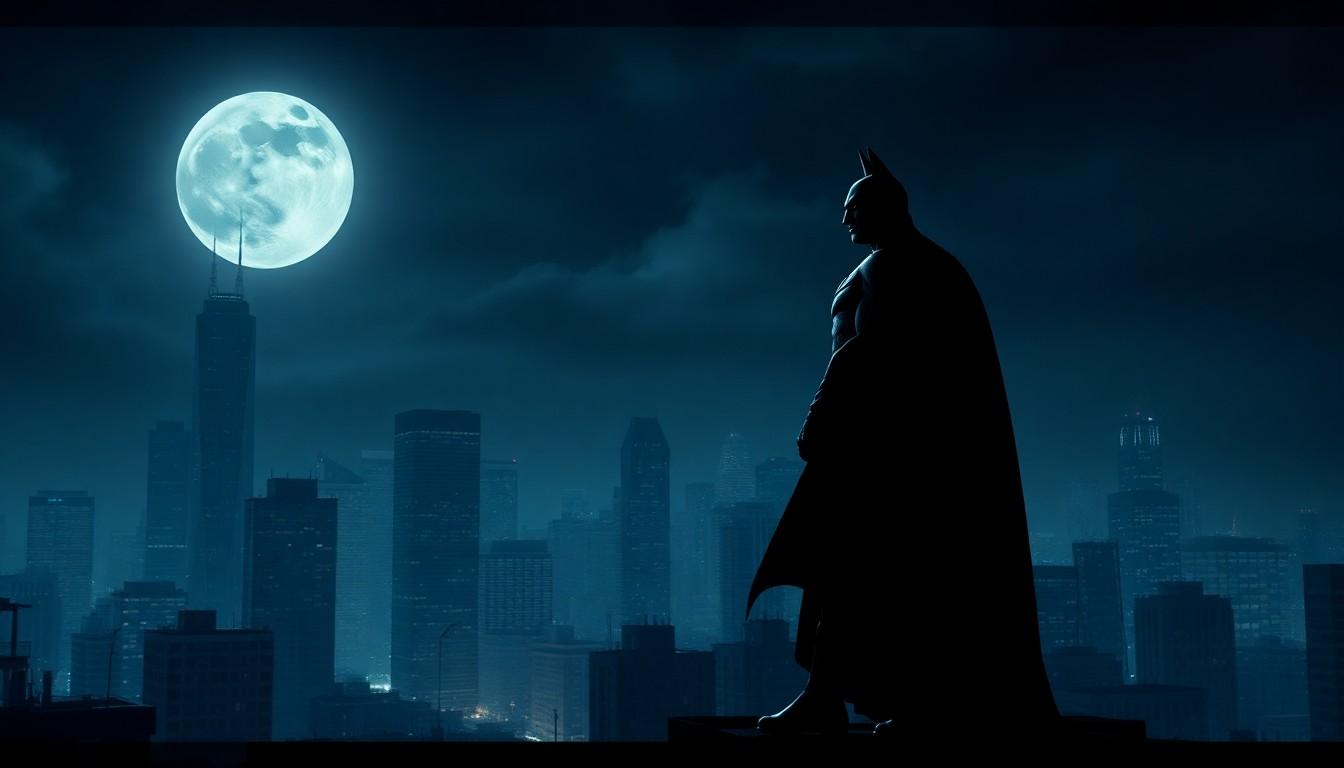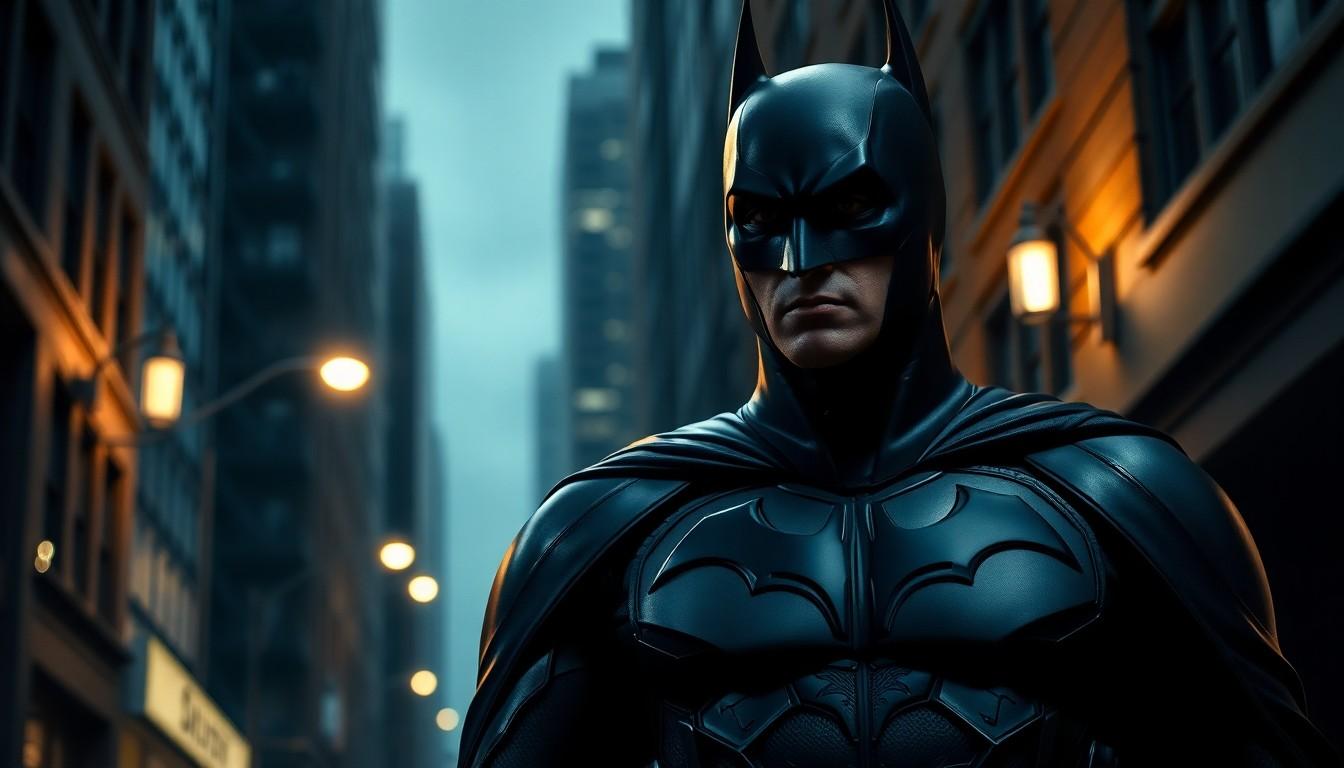Phone:
(701)814-6992
Physical address:
6296 Donnelly Plaza
Ratkeville, Bahamas.

When it comes to superheroes, few can rival the caped crusader himself. Batman has swung through the shadows of Gotham for decades, captivating audiences with his brooding demeanor and questionable fashion choices. From the campy charm of the 1960s to the gritty realism of modern adaptations, live-action Batman movies have evolved, but one thing remains constant: the Dark Knight’s undeniable appeal.
Whether he’s battling the Joker’s maniacal laughter or engaging in a fierce showdown with Catwoman, Batman movies offer a thrilling mix of action, drama, and just the right amount of dark humor. The question isn’t if you should watch them, but rather which one to binge first. So grab your popcorn and get ready to dive into the world of Gotham’s finest, where every film is a chance to explore the depths of heroism and the occasional questionable life choice.
Live action Batman movies showcase a rich history, reflecting the evolution of the character across decades. Batman’s first major live action appearance occurred in 1989 with Tim Burton’s visually striking adaptation, introducing Michael Keaton as the iconic hero. This film set the stage for a darker interpretation of the character, attracting a broader audience.
Subsequent films expanded on this foundation, notably the “Batman” franchise that highlighted the interplay between hero and villain. Batman faced off against key adversaries such as the Joker in “Batman” (1989) and the Penguin in “Batman Returns” (1992). Each film contributed to Batman’s lore, exploring themes of fear, justice, and duality.
Christopher Nolan’s trilogy elevated the series, releasing “Batman Begins” (2005), “The Dark Knight” (2008), and “The Dark Knight Rises” (2012). This trilogy emphasized psychological depth, morality, and societal issues while showcasing Heath Ledger’s unforgettable performance as the Joker.
More recent adaptations include “Batman v Superman: Dawn of Justice” (2016) and “Justice League” (2017), which incorporate Batman into a larger universe alongside other DC heroes. Both films address themes of power, responsibility, and the complexities of heroism.
Robert Pattinson portrays Batman in “The Batman” (2022), offering a fresh perspective on the character. This iteration leans heavily into the detective angle of the narrative, focusing on crime-solving within a gritty Gotham City.
Ranging from campy to dark, live action Batman movies tell diverse stories phrased within thrilling action and intricate character development. As Batman encounters various villains and challenges, each film reinforces his status as a cultural icon.

Batman’s journey through film showcases significant transformations in tone and style, reflecting cultural shifts and viewers’ expectations over the years. This evolution unfolds across distinct eras in cinematic history.
The first notable live action portrayal of Batman occurred in 1943 with a serial film that introduced the character to a broader audience. Campiness defined the 1966 television show starring Adam West, which embraced a light-hearted take and colorful aesthetics. Tim Burton’s “Batman” (1989) marked a pivot toward a darker interpretation, with Michael Keaton donning the cape and cowl. This film emphasized themes of fear and duality while also setting cinematic standards that later adaptations followed. “Batman Returns” (1992) continued this trend, showcasing Burton’s unique visual style and introducing further complexities in Batman’s character.
Modern interpretations of Batman began with Christopher Nolan’s trilogy, significantly altering perceptions of the character and his story. “Batman Begins” (2005) established a gritty origin story focused on trauma and resilience. The subsequent installment, “The Dark Knight” (2008), received critical acclaim for its exploration of morality, featuring Heath Ledger’s exceptional performance as the Joker. Following Nolan’s trilogy, films like “Batman v Superman: Dawn of Justice” (2016) and “Justice League” (2017) interwove Batman’s narrative with other superheroes, tackling broader questions of power and justice in a shared universe. In 2022, “The Batman,” starring Robert Pattinson, highlighted Batman’s detective skills, presenting a more nuanced and immersive take on Gotham’s complexities.
Numerous actors brought Batman to life on the big screen, each contributing to the rich legacy of the character. The versatility and distinct interpretations stand out throughout his cinematic history.
Adam West’s portrayal in the 1960s series defined campy charm. His light-hearted take showcased Batman’s playful side, making him a household name. Transitioning to the 1980s, Michael Keaton’s performance introduced a darker, more complex Batman in Tim Burton’s “Batman” (1989). This shift emphasized a brooding personality, as Keaton balanced vulnerability and strength. This interpretation set a new standard for future portrayals, marrying the character’s duality in a way that resonated with audiences.
Christian Bale transformed the character in Christopher Nolan’s trilogy, particularly noted for “The Dark Knight” (2008). His intense commitment brought an unparalleled depth to the role, exploring themes of fear and morality. Ben Affleck followed with a more seasoned Batman in “Batman v Superman: Dawn of Justice” (2016). This version reflected a darker and more jaded hero, grappling with his past and the weight of responsibility. Each actor left an indelible mark, shaping the evolution of Batman across generations.
Batman’s presence in pop culture extends far beyond the screen, shaping various aspects of media and merchandise. His enduring popularity has led to an array of products, including toys, clothing, and video games that resonate with fans around the world.
Merchandise related to Batman generates billions each year. Popular items include collectible action figures, apparel, and themed accessories. Television shows such as “Gotham” expand the universe, introducing new characters and narratives. Animated features, like “Batman: The Animated Series,” also enjoyed substantial acclaim, influencing subsequent adaptations. Consistent reimagining of animated and live-action portrayals keeps Batman relevant, ensuring new generations discover the character.
Batman significantly impacts the superhero genre as a whole. Tim Burton’s 1989 film set a precedent for darker storytelling in superhero films. Following this trend, Christopher Nolan’s trilogy emphasizes psychological realism, encouraging other franchises to tackle complex themes. Marvel films often draw inspiration from Batman’s character depth, shaping how heroes and villains interact on screen. Successful adaptations further affirm the necessity of a strong narrative foundation, guiding future filmmakers in their creative choices.
The reception of live-action Batman movies is significant, reflecting both box office performance and critical reviews.
Live-action Batman films consistently achieve impressive box office returns. Tim Burton’s “Batman” garnered over $400 million globally, proving to be a box office sensation. Nolan’s trilogy, particularly “The Dark Knight,” surpassed expectations, earning over $1 billion worldwide. “Batman v Superman: Dawn of Justice,” despite mixed reviews, also crossed the $800 million mark. The latest iteration, “The Batman,” generated over $770 million, showcasing its popularity and appeal. These figures illustrate Batman’s enduring commercial success across various adaptations.
Critical reception has varied significantly among live-action Batman films. “The Dark Knight” received widespread acclaim, with an impressive 94% on Rotten Tomatoes, highlighting its innovative storytelling and character depth. Critics praised Heath Ledger’s portrayal of the Joker, which earned a posthumous Academy Award. In contrast, “Batman v Superman: Dawn of Justice” faced criticism for its tonal inconsistencies, averaging a 29% rating. Fans, however, often embrace these films, resulting in passionate debates over interpretations. This divergence illustrates the complex nature of audience expectations, balancing critical perspectives and fan enjoyment.
Batman’s evolution in live-action films reflects not just changes in storytelling but also shifts in societal expectations. Each portrayal brings a unique flavor to the character, enriching the lore surrounding Gotham’s dark knight. With diverse interpretations from various actors, the franchise continues to captivate audiences worldwide.
As viewers explore these films, they’re invited to appreciate the depth and complexity of Batman’s journey. The character’s enduring appeal lies in his ability to resonate across generations, making each new release a highly anticipated event. Whether through action-packed sequences or psychological depth, Batman remains an iconic figure in cinema.